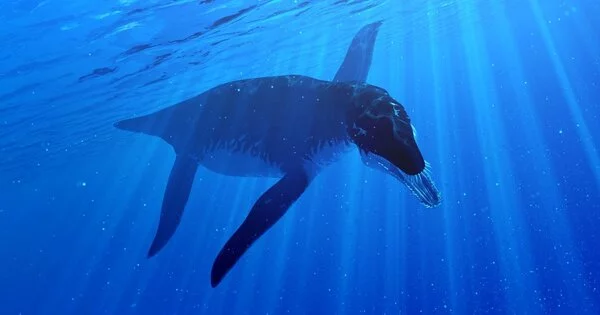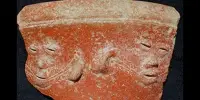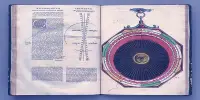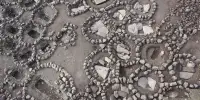Several marine reptiles known as “giants of the Jurassic seas” existed during the Jurassic period and were significantly larger than a killer whale (Orcinus orca). The size of Jurassic creatures has been the subject of fierce controversy. The speculation was likely to continue, but a fortunate discovery in an Oxfordshire museum has led to palaeontologists publishing a report on a Jurassic animal that may grow to be 14.4 metres long – twice the size of a killer whale.
A 25-metre-long Liopleurodon was featured in the BBC’s Walking with Dinosaurs TV documentary series over 20 years ago. This triggered intense disputes about the size of this pliosaur, which was regarded to be vastly inflated and more likely to have only reached an adult size of slightly more than six metres.
The speculation was likely to continue, but a chance discovery in an Oxfordshire museum has led to palaeontologists from the University of Portsmouth publishing a paper on a similar animal that may grow to be 14.4 metres long – twice the size of a killer whale.
We know these pliosaurs were very fearsome creatures swimming in the seas that covered Oxfordshire 145-152 million years ago. They had a large cranium with huge jutting fangs like daggers, as big as, if not bigger than, a T. rex and unquestionably more powerful.
Professor David Martill
“I was a consultant for the BBC’s pilot programme ‘Cruel Sea,’ and I hold my hands up – I got the size of Liopleurodon horribly wrong,” said Professor David Martill from the University of Portsmouth’s School of the Environment, Geography, and Geosciences. “I based my calculations on some fragmentary material that suggested a Liopleurodon could grow to a length of 25 metres, but the evidence was scant and it caused a lot of controversy at the time.”
“The BBC’s size estimate from 1999 was exaggerated, but now we have considerably more reliable information thanks to the accidental finding of four large vertebrates.”
Professor Martill’s co-author, Megan Jacobs, was photographing an ichthyosaur skeleton at Abingdon County Hall Museum, while Dave looked through drawers of fossils. He found a large vertebra and was thrilled to discover the curator had three more of them in storage.
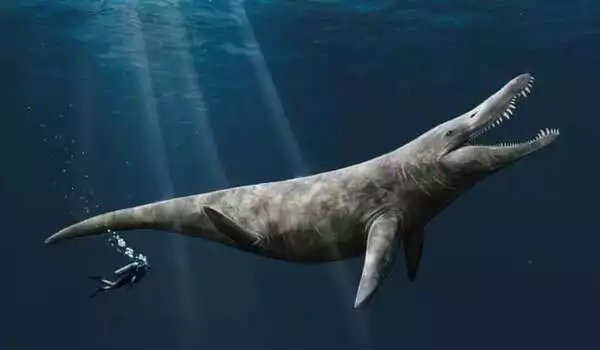
The vertebrae are clearly identifiable as being closely related to a Pliosaurus species or similar animal. Pliosaurs were like plesiosaurs, but with a bigger elongated head, similar to a crocodile, and a shorter neck. They had four flippers, which acted as powerful paddles to propel them through water and a relatively short tail.
After conducting topographic scans, Professor Martill and colleagues calculated this Late Jurassic marine reptile could have grown to between 9.8 and 14.4 metres long.
“We know these pliosaurs were very fearsome creatures swimming in the seas that covered Oxfordshire 145-152 million years ago,” he explained. They had a large cranium with huge jutting fangs like daggers, as big as, if not bigger than, a T. rex and unquestionably more powerful.”
“They were at the top of the marine food chain and most likely preyed on ichthyosaurs, long-necked plesiosaurs, and possibly even smaller marine crocodiles by biting them in half and ripping chunks off them.” We know they were slaughtering smaller marine reptiles because bite marks in ichthyosaur bones on exhibit at The Etches Collection in Dorset.”
The vertebrae were discovered during temporary excavations at Warren Farm in Oxfordshire’s River Thames Valley, and they are from the Kimmeridge Clay Formation. This deposit dates from the Late Jurassic period, approximately 152 million years ago.
“It’s wonderful to prove there was a truly gigantic pliosaur species in the Late Jurassic seas,” Professor Martill remarked. Although not yet on the same level as the claims made for Liopleurodon in the renowned BBC TV series Walking With Dinosaurs, it wouldn’t surprise me if one day we find clear evidence that this enormous creature was much bigger.”
